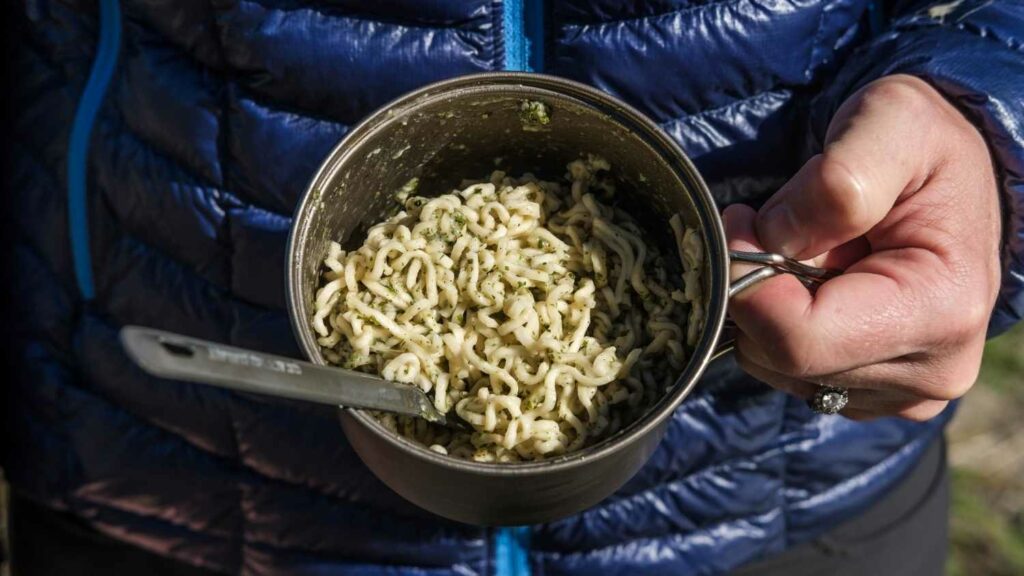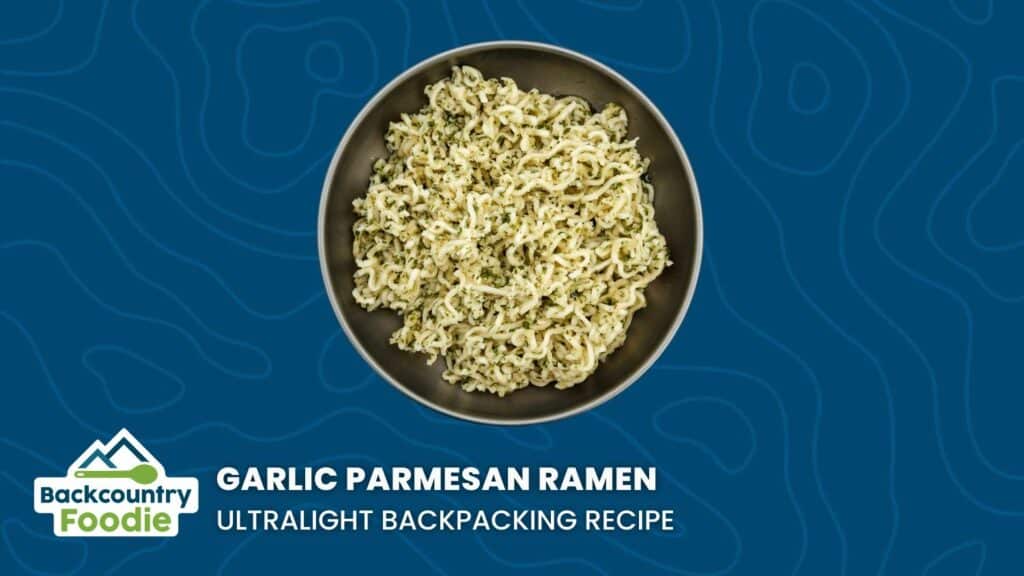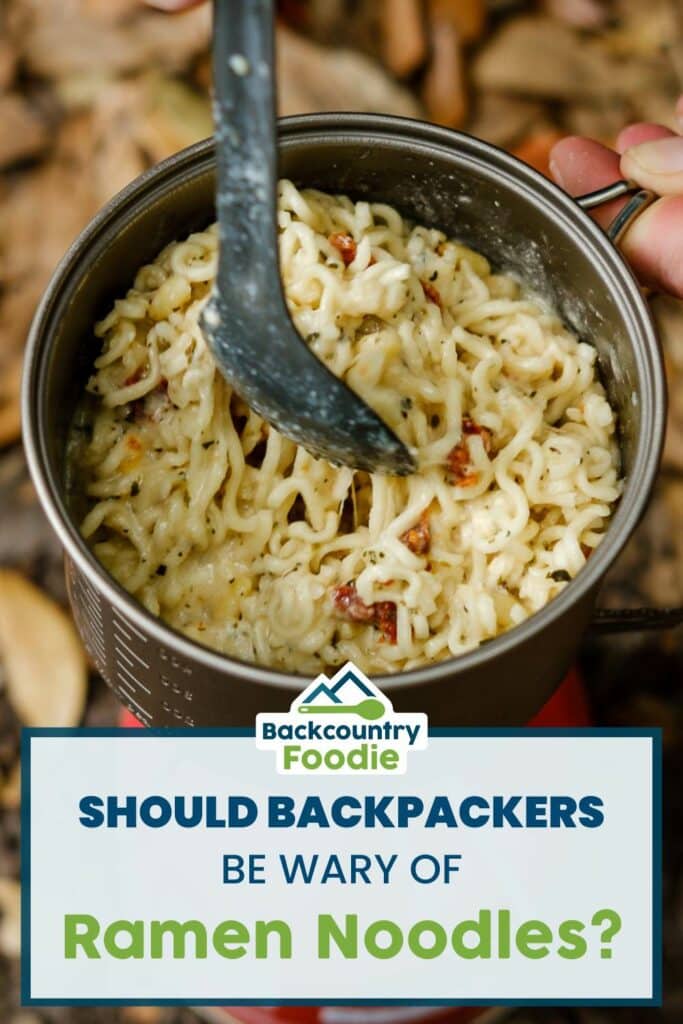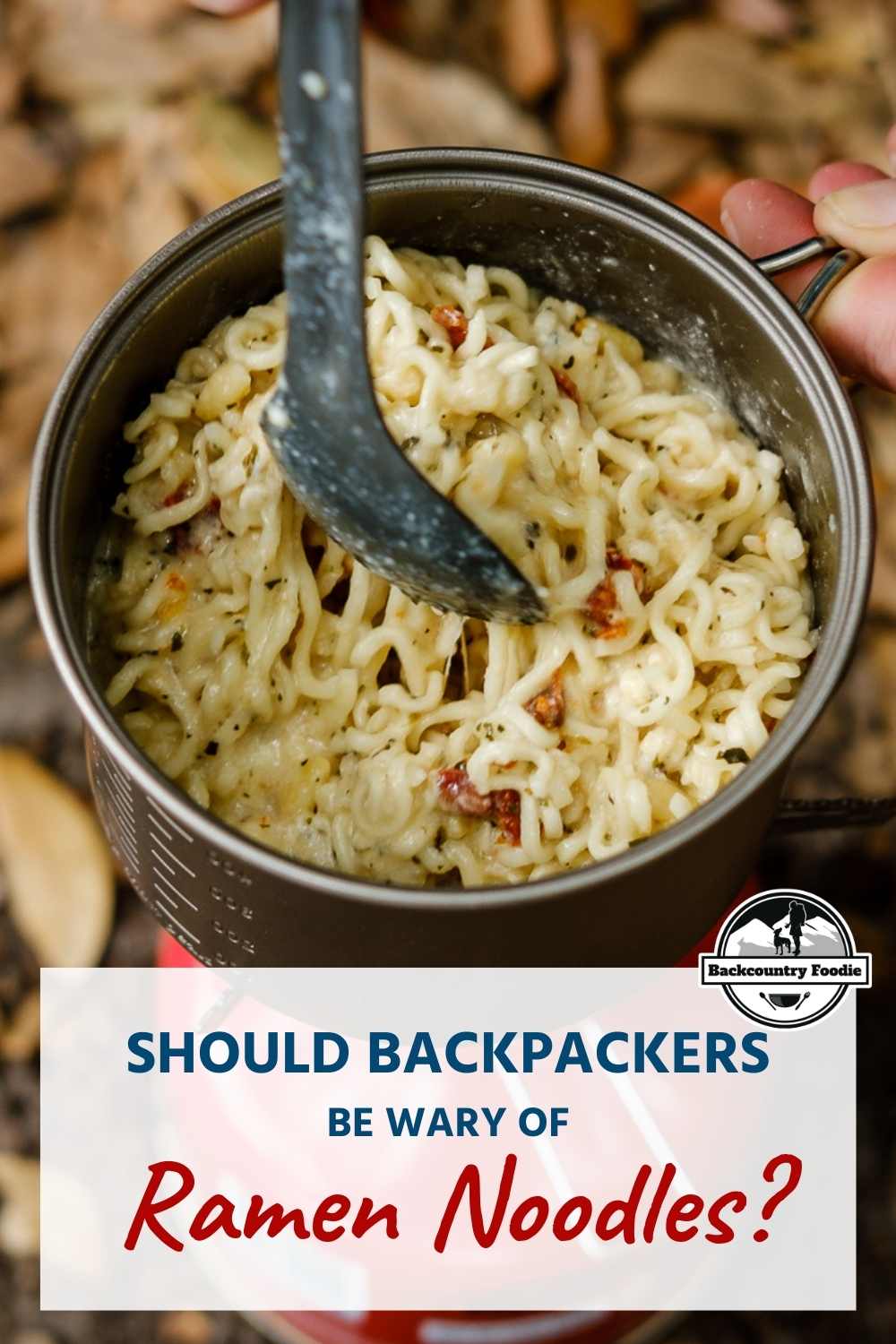Should backpackers be wary of ramen noodles?
By Aaron Owens Mayhew, MS, RDN, CD
Updated January 14, 2024
This post may contain affiliate links.

History of instant ramen noodles
Did you know?
- Ramen is a Japanese adaptation of Chinese wheat noodles believed to be introduced to Japan in 1859.
- However, instant ramen noodles were not invented until 1958 by Momofuku Ando, the Taiwanese-Japanese founder of Nissin Foods, the producer of what is now Top Ramen.
- According to a Japanese poll in 2000, it is believed that instant ramen was their greatest invention of the twentieth century.
- As of 2018, 103 billion servings of instant noodles are consumed annually worldwide!

Why are instant ramen noodles considered to be so unhealthy?
The obvious answer to that is the presence of saturated fat, sodium, preservatives, and artificial flavorings. Although there’s more to the story…
Saturated Fat
This is a controversial topic when it comes to instant ramen noodles. Research has determined that saturated fat intake increases the risk of elevated lipid profiles. Elevated cholesterol can then increase the risk of cardiovascular disease.
Palm oil, a saturated fat, is the primary source of fat used to flash fry the noodles, extending their shelf life. Palm oil, however, does not behave like a typical saturated fat because it comprises 50% unsaturated fats, healthy fats. Therefore, researchers have had difficulty determining if palm oil puts consumers at risk of increased cardiovascular disease.
One research study in Korea determined that women who consume more than 2 servings of instant ramen noodles daily are at increased risk of heart disease.
If you believe in protecting our environment, using palm oil might be concerning for different reasons. Deforestation is a topic for another day.
Sodium
Instant ramen noodles are laden with sodium (salt), which can increase the risk of cardiovascular disease in some. However, if the spice packet is discarded, the amount of sodium ingested is significantly less. I don’t know about you, but I automatically throw spice packets in the garbage. A variety of other ingredients (e.g., cheese, herbs, nuts) can be added to boost the flavor and nutrition profile of the noodles. Our garlic parmesan ramen recipe is an excellent example of this, but don’t go there just yet!
Flavor Enhancers & Preservatives
Like many processed foods, instant ramen noodles contain ingredients like monosodium glutamate (MSG), a flavor enhancer, and tertiary butylhydroquinone (TBHQ), a preservative. Studies claim that these ingredients can be harmful to your health but to what degree is yet to be determined. A video produced by Dr. Braden Kuo of Massachusetts General Hospital shows how difficult ramen noodles are to digest. Despite the video results, Dr. Kuo states that his findings have not deterred him from consuming instant noodles.
Now, wait just a minute!
If there are health risks associated with instant noodles, why are 103 billion servings of instant noodles consumed annually?
The answer to that is relatively easy…
Instant noodles are inexpensive, shelf-stable, easy to prepare, and, let’s face it…they taste good.
Should backpackers stop including ramen noodles in their meal plans?
The answer to this is personal, but as a registered dietitian and backpacker, instant ramen noodles will continue to be included in my backpacking diet. Here’s why:
- The nutrition profile and ingredients list (not including the spice packet) is less concerning when compared to other frequently consumed backpacking foods. Next time you’re at the grocery store, read the list of ingredients for pop-tarts and glazed honey buns.
- Your intake of instant ramen noodles is likely not going to meet or exceed the amount (2 servings daily) considered to be a risk factor for cardiovascular disease.
- The remainder of your diet likely includes the nutrients missing in instant noodles, making deficiencies less of a concern.
- Discarding the spice packet reduces the intake of questionable ingredients with more nutritious ingredients (i.e., dehydrated vegetables, cheese, nuts) added by yourself.
- Whole wheat air-dried noodles without flavorings or preservatives can be purchased at many Asian markets for a slightly higher price.
- Instant noodles made with rice, millet, or organic buckwheat can be purchased as healthier alternatives.
- Higher protein noodles and microwave-dried noodles might be made available in the future.
Disclaimer: This is general nutrition advice, and you should talk with your physician before implementing any dietary or lifestyle changes. Always check nutrition labels and ingredient lists to ensure food items will work for you.

If you’re still a fan of instant ramen noodles, enjoy this Backcountry Foodie fan favorite.

Check out the video below for a meal prep demo, including time and money-saving tips.
READY TO SEE MORE ULTRALIGHT BACKPACKING RECIPES LIKE THIS ONE?
Backcountry Foodie is your go-to resource for over 200 backpacking dietitian-created recipes and a one-of-a-kind automated meal planning tool. The meal planner even creates itemized shopping lists for you! Meal prep has never been easier.

DISCLOSURE: Some of the links on this page are affiliate links, which means we may receive a modest commission if purchases are made through those links. This adds no cost to our readers and helps us keep our site running. Our reputation is our most important asset, so we only include links for products we use ourselves.
Did you enjoy this post?
Pin it and share it with your fellow hikers.

New to our blog?
Here are a few posts that you might find interesting…
- Backpacking Meal Plans: Not All Are Created Equal
- Top 4 Reasons to Dehydrate Your Own Backpacking Meals
- Carbohydrates and DIY Backpacking Meals
- Protein, Fat, and DIY Backpacking Meals
- How to Choose Snacks for Your Hiking Adventures
- Backpacking Nutrition: Fueling Farther Using the Goldilocks Approach
ABOUT THE AUTHOR:
Aaron Owens Mayhew, MS, RDN, CD, is a registered dietitian and ultralight long-distance backpacker with over 20 years of nutrition and backpacking experience. She’s also the founder and owner of Backcountry Foodie, an online ultralight recipes and meal planning platform for backpackers. She also enjoys teaching hikers about backpacking nutrition via virtual masterclasses, YouTube videos, and podcast episodes. You can follow Aaron’s adventures in the kitchen and the backcountry via Instagram and Facebook.



2 Comments
Ramen will always be a staple in my bear can on the trail for several reasons. For one, they taste great. I’m not sure if it’s the altitude or what but when I’m on a long backpacking trip especially in high altitude I have a hard time eating enough, everything just makes me feel nauseous especially the first few days. The warm broth of Ramen seems to be a craving when other food just sounds nauseating. I’ll wake up sometimes at five in the morning for a craving for some Ramen soup. I’m always looking the maximize the nutritional value as I know from a diet standpoint it’s not ideal. For this summer’s thru-hike I’m switching over to Chef Woo ramen which comes in at 20g of protein per serving, nearly double the protein of most other ramens. No it’s not something I eat a lot at home but never ever would I tire from ramen on the trail. It’s what I look forward to most in my bear can.
Good stuff here! If I am not mistaken a single package of instant ramen is considered 2 servings. (although for a hungry backpacker might seem like less!)
Meaning that would be the maximum recommended intake in a 24 period?